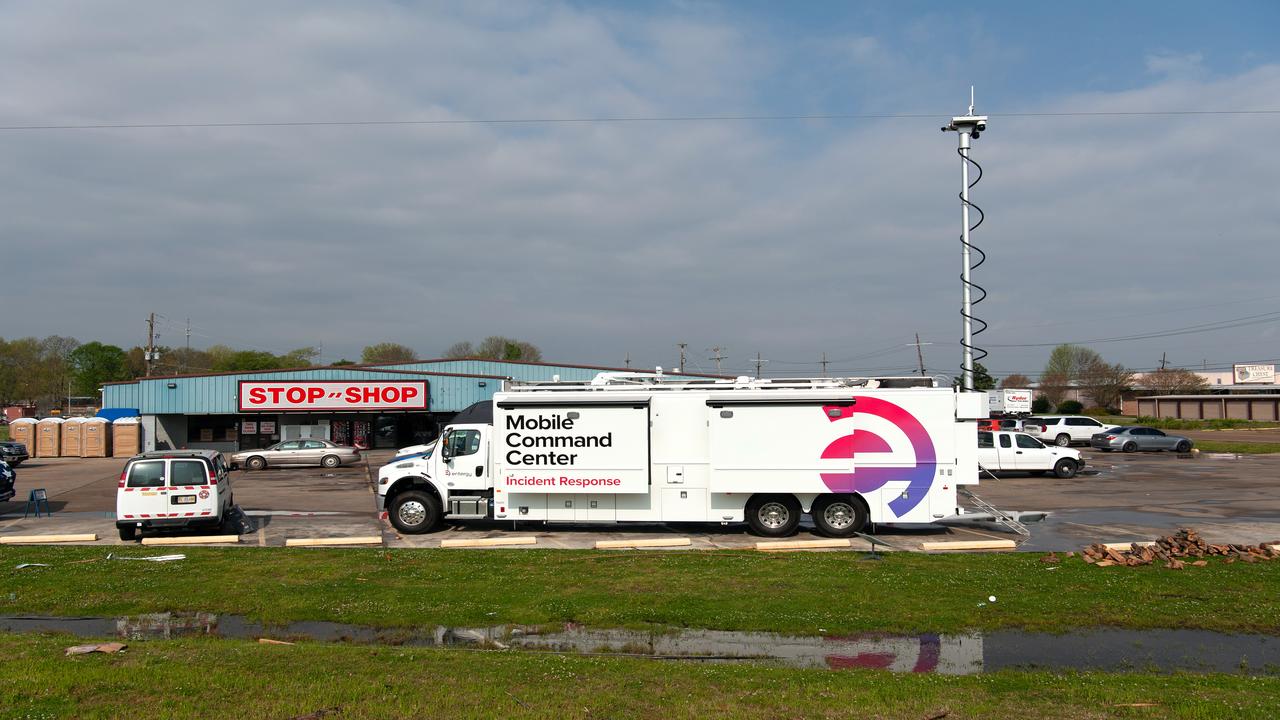Insights > Looking behind the scenes: Logistics teams keep crews housed and fed
Looking behind the scenes: Logistics teams keep crews housed and fed
03/06/2024

When extreme weather causes power outages, thoughts usually turn to utility crews in bucket trucks repairing the poles and wires necessary to restore electric service. Behind the scenes, however, a completely different scenario is unfolding — one involving housing, food and fuel for hundreds, sometimes thousands, of workers.
As an army of electric line workers and contractors arrive to put the pieces back together, another army is making phone calls, setting up lodging and other support services, entering information and overseeing deliveries to ensure crews get adequate rest and sustenance so they’re safe and productive on the job.
This logistics support may not be seen by customers but is crucial to any successful storm response. It also is much appreciated by crew leaders who had to handle those details along with restoration work in the early days of mutual-assistance efforts.
Paula Terry, who recently retired with 42 years of service, remembers those times and, in an effort to lessen the load placed on travel teams, was assigned the role of crew tracker during major storms. Every Entergy employee has a role to play during storms, a companywide policy instituted some 15 years ago.
“Making sure that restoration workers are well taken care of is a key role in storm logistics,” said Terry. “And the numbers can grow rapidly depending on the scale of damage caused. When restoration efforts are widespread, it becomes imperative to track and monitor crew activity for efficient management.”
Logistics crews support crew whenever, wherever needed
Logistics crews support restoration crews whenever, wherever needed
Terry said that management becomes particularly challenging as crews complete repairs on one circuit and move to the next, which sometimes can be an hour or more away. It also can be challenging when host staging sites are full and hotel rooms are limited or nonexistent in affected areas.
Often set up in parking lots, staging sites operate like small cities, offering workers places to sleep, eat, refuel vehicles and restock supplies. Bunk trailers are often brought in, cots are set up in large tents, and other tents serve as dining halls. Other trailers are provided as shower and restroom facilities, and laundry service often is available as well.
“After Hurricane Ida, Entergy Mississippi crews were working multiple circuits simultaneously and moving around daily,” said Terry. “We were constantly making arrangements, sometimes double- and triple-checking to be sure they were confirmed. The last thing we want is to have workers who are already tired from 16-hour shifts find out there’s nowhere to sleep other than their trucks. That is not ideal, which is why we’re so vigilant in our efforts.”
She added that logistics personnel frequently work 16-hour days themselves to ensure success in taking care of the crews, voicing satisfaction to have been part of such a dedicated team for so long.
“The commitment of Entergy Mississippi employees is impressive,” said Terry. “Over and over, I witnessed the sacrifices my co-workers made to get the job done even when their own homes and lives were torn apart. As customers ourselves, we know how much it means when power is restored, and we pulled together to make sure everything ran the way it should so crews could safely get the lights back on as quickly as possible.”
Entergy streamlines logistics to improve response effort
Maurice Rieffel, senior manager of incident response, said that following Hurricane Ida, which devastated much of Entergy’s service area in 2021 before it headed northeast, the company changed the way in which logistics were managed. Implementing a new resource-management program and centralizing operations, each operating company — including Entergy Mississippi — now efficiently coordinates all plans with the logistics team before taking action.
“We know our employees go above and beyond when storms strike, providing superior customer service whether right here in our own backyard or when traveling to help other utilities,” said Rieffel. “That’s why we’ve refined our processes, upgraded our tools and restructured some roles in an effort to provide better and more streamlined support.”
Rieffel added although the company hasn’t yet faced another large-scale event, this new approach was successfully tested in spring 2023 when destructive tornadoes tore a path through the Magnolia State, virtually leveling the town of Rolling Fork.
Todd Watts, retired region manager who served in many operational capacities over the years, said he’s glad to see company support grow and evolve along with what crews need to be safe, efficient and effective in the worst of conditions.
“When the first Mississippi teams began traveling to help others many years ago, we were responsible for our own arrangements and one person back in the office was reconciling our credit card receipts,” said Watts. “While we were glad to be going and we made it work, it was challenging at times.
“Besides better safety practices, I think one of the biggest improvements in mutual-assistance efforts has been assembling a complete logistic team to travel with our crews,” he added. “From radio issues, to tire blow outs, to rooms to food – the logistic team handled all of the travel team’s needs.”

